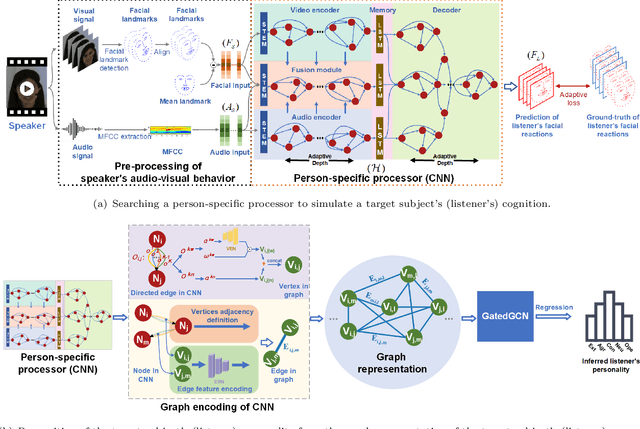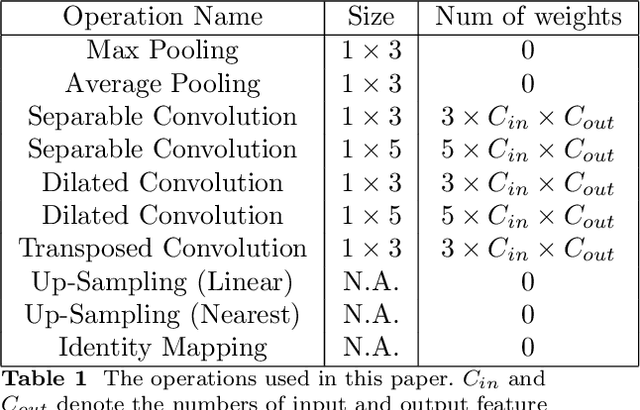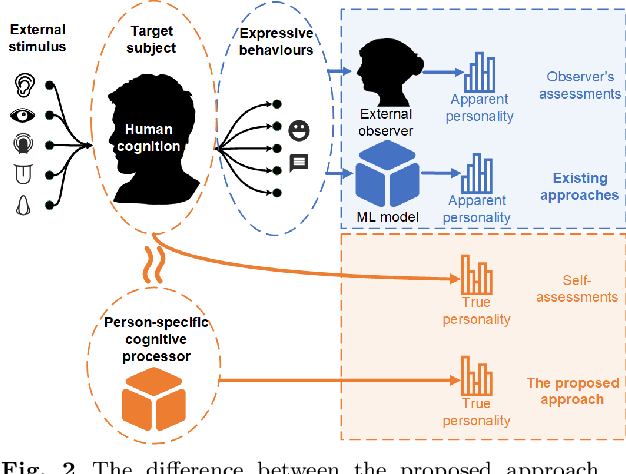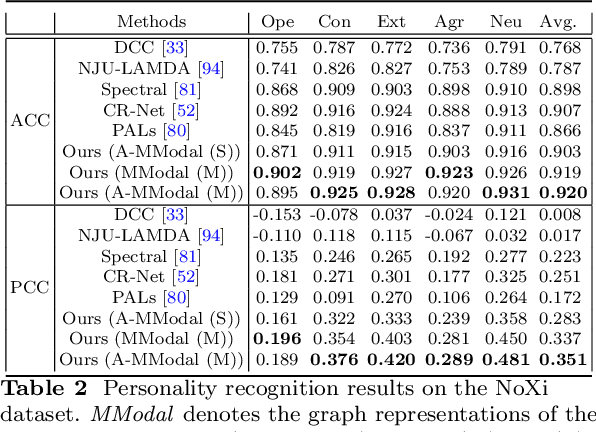Learning Graph Representation of Person-specific Cognitive Processes from Audio-visual Behaviours for Automatic Personality Recognition
Paper and Code
Oct 27, 2021



This approach builds on two following findings in cognitive science: (i) human cognition partially determines expressed behaviour and is directly linked to true personality traits; and (ii) in dyadic interactions individuals' nonverbal behaviours are influenced by their conversational partner behaviours. In this context, we hypothesise that during a dyadic interaction, a target subject's facial reactions are driven by two main factors, i.e. their internal (person-specific) cognitive process, and the externalised nonverbal behaviours of their conversational partner. Consequently, we propose to represent the target subjects (defined as the listener) person-specific cognition in the form of a person-specific CNN architecture that has unique architectural parameters and depth, which takes audio-visual non-verbal cues displayed by the conversational partner (defined as the speaker) as input, and is able to reproduce the target subject's facial reactions. Each person-specific CNN is explored by the Neural Architecture Search (NAS) and a novel adaptive loss function, which is then represented as a graph representation for recognising the target subject's true personality. Experimental results not only show that the produced graph representations are well associated with target subjects' personality traits in both human-human and human-machine interaction scenarios, and outperform the existing approaches with significant advantages, but also demonstrate that the proposed novel strategies such as adaptive loss, and the end-to-end vertices/edges feature learning, help the proposed approach in learning more reliable personality representations.
 Add to Chrome
Add to Chrome Add to Firefox
Add to Firefox Add to Edge
Add to Edge